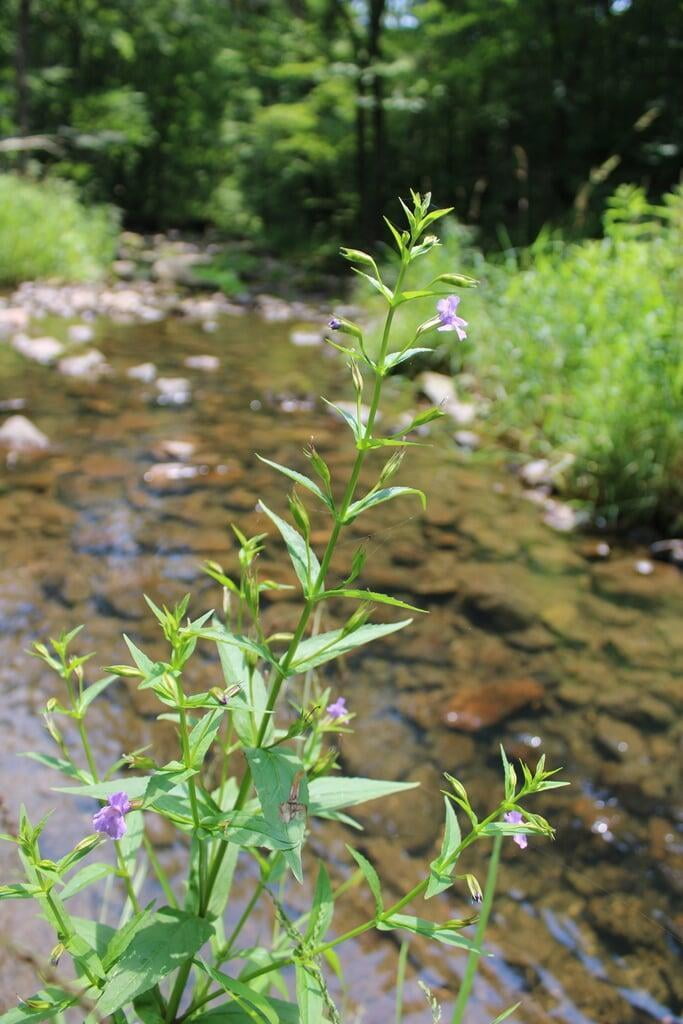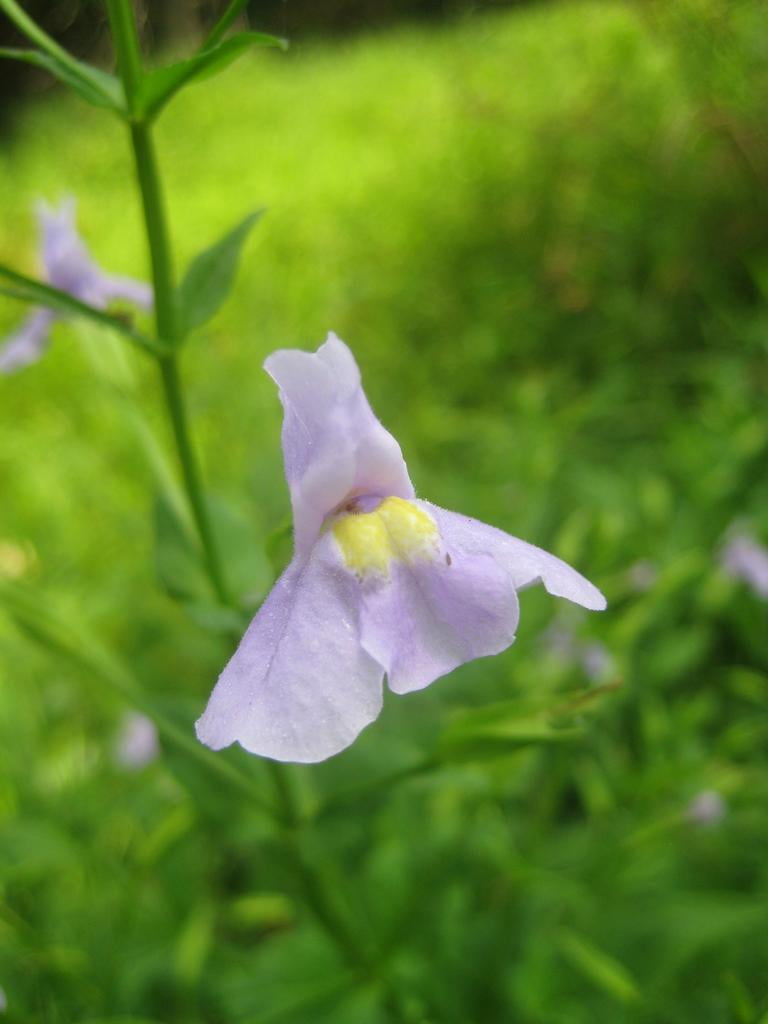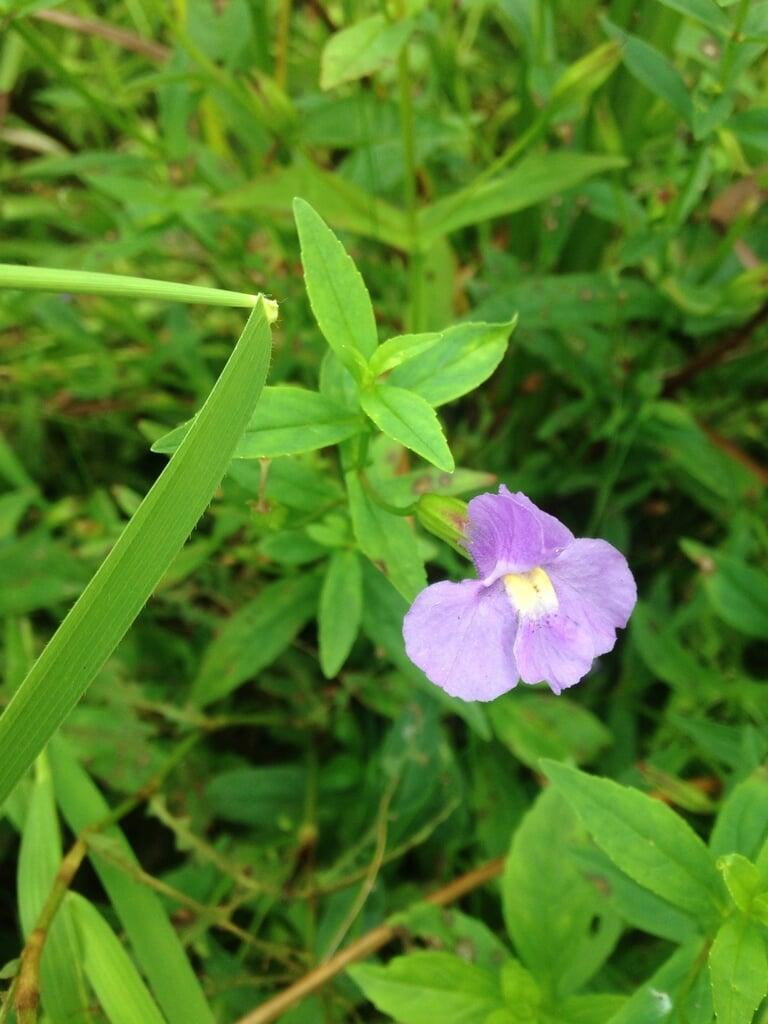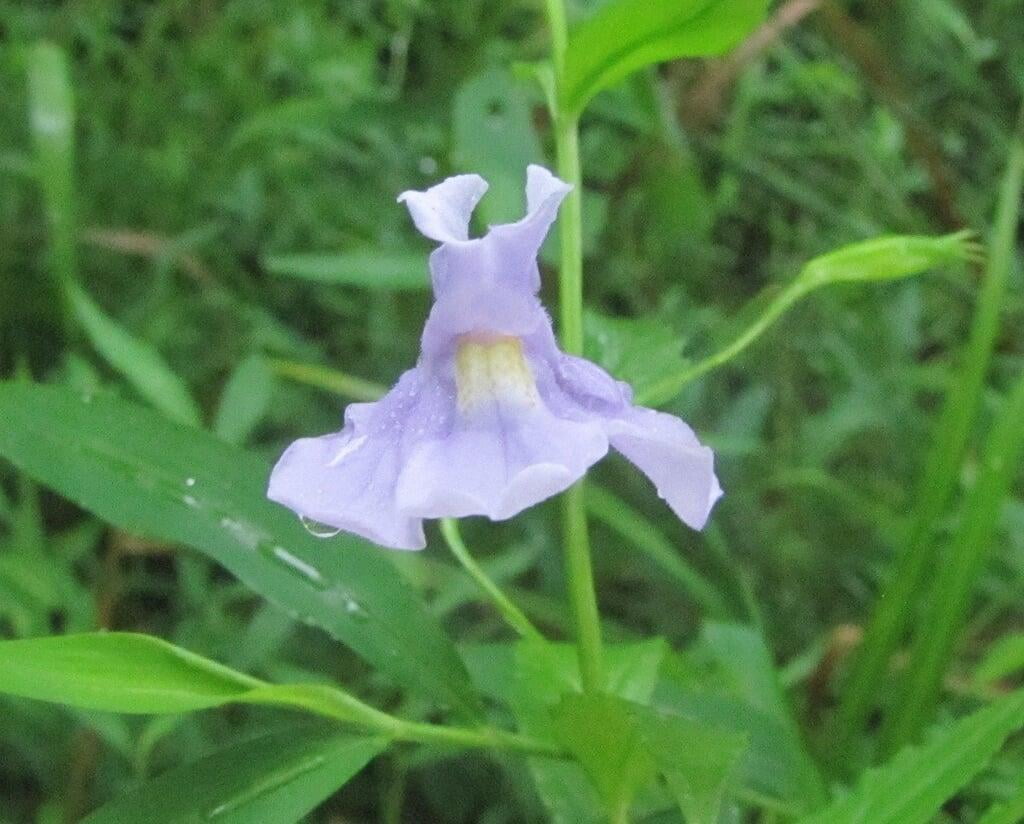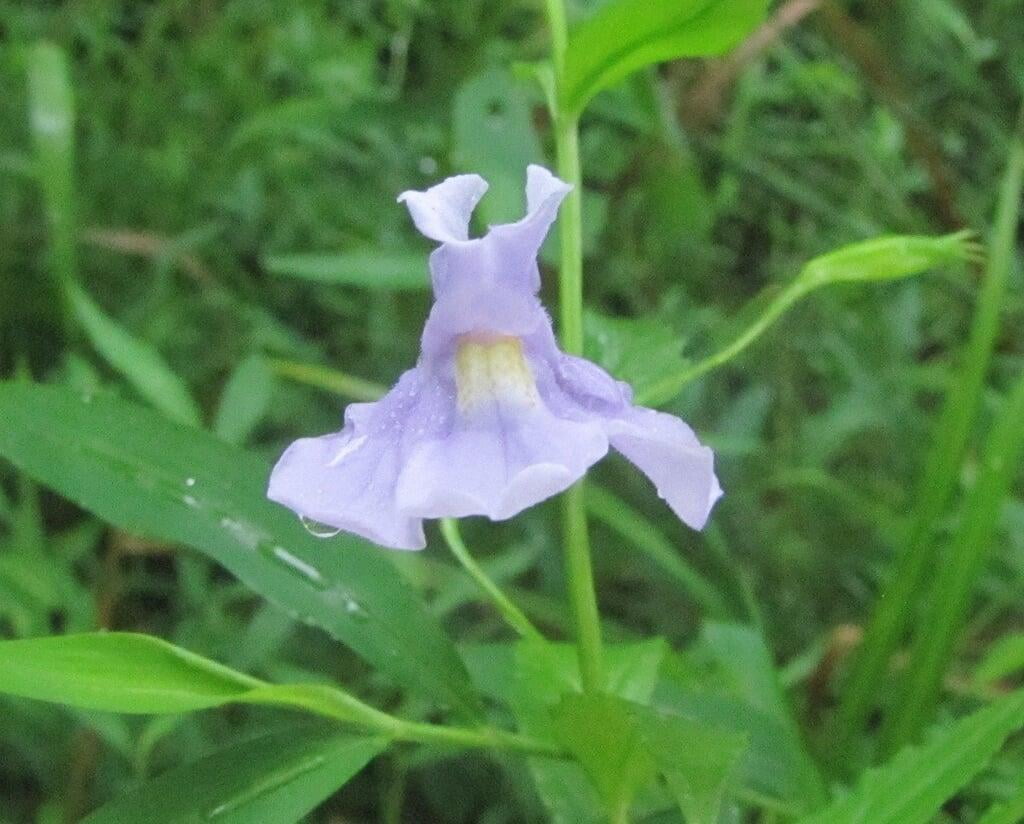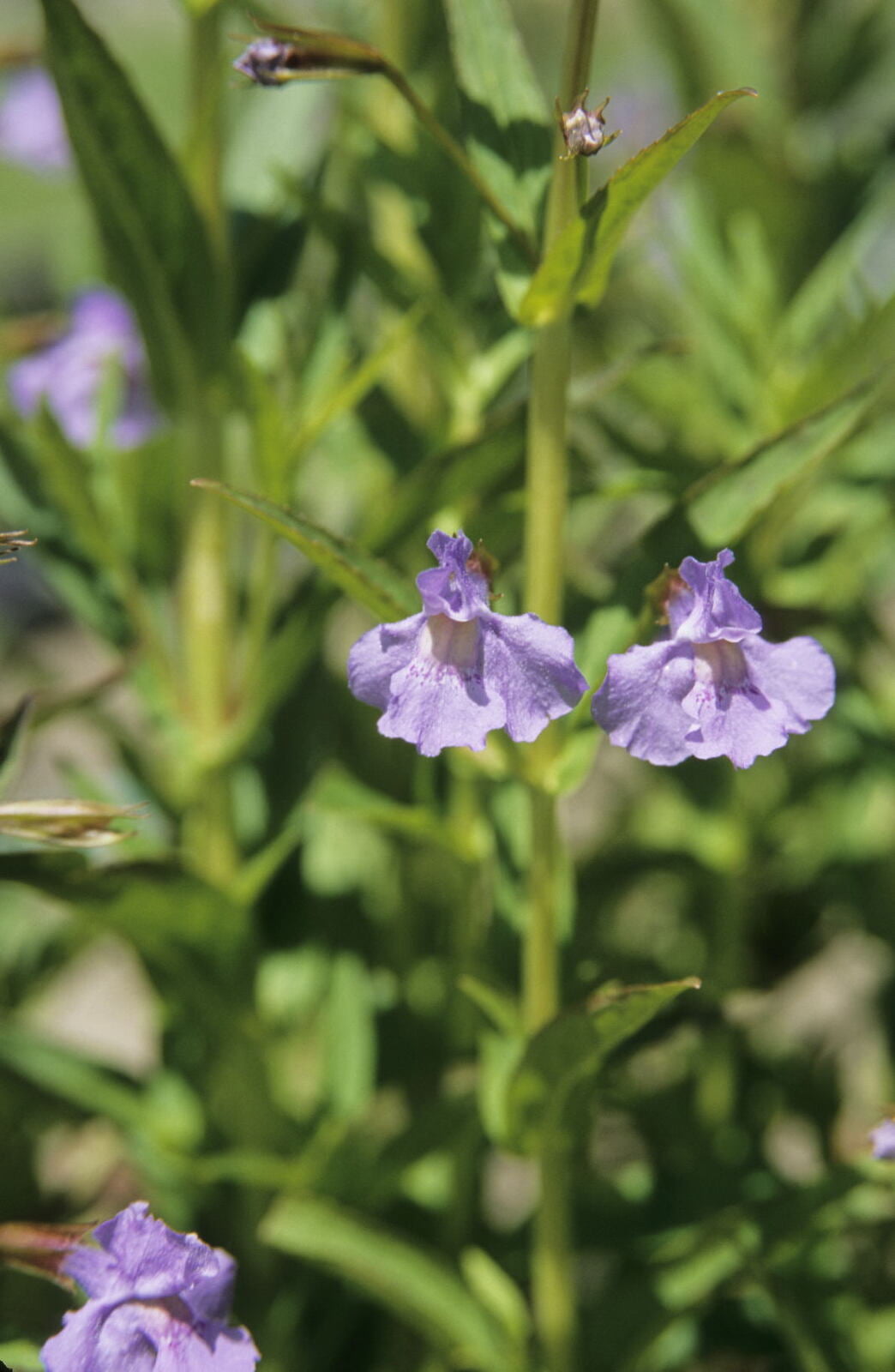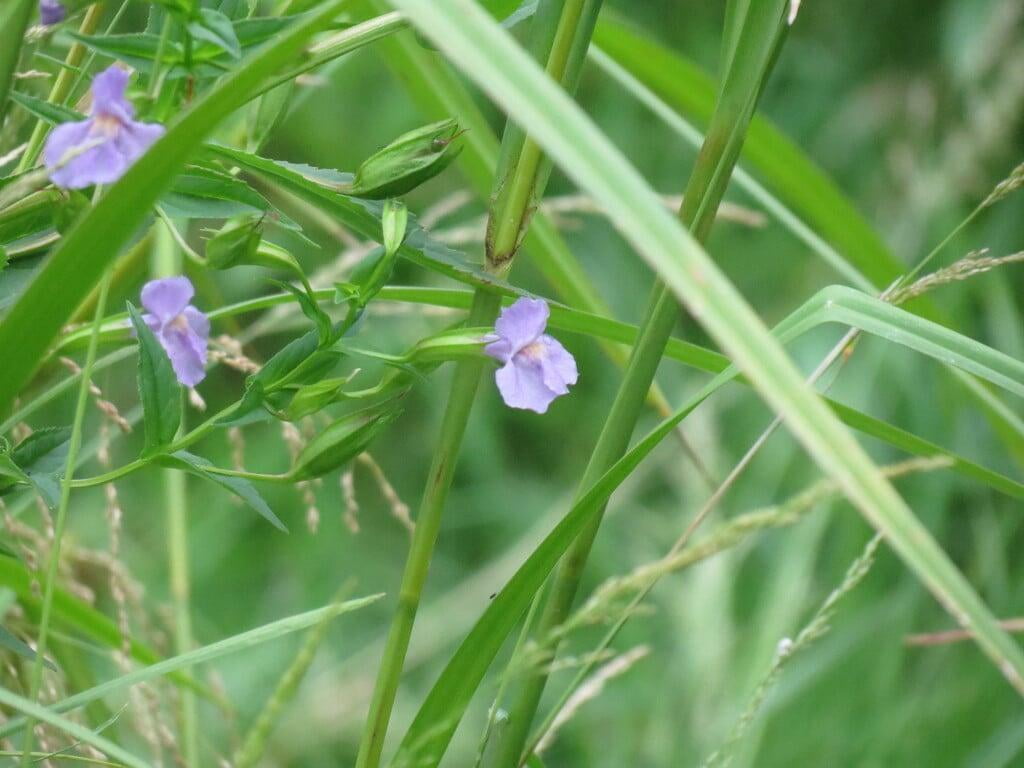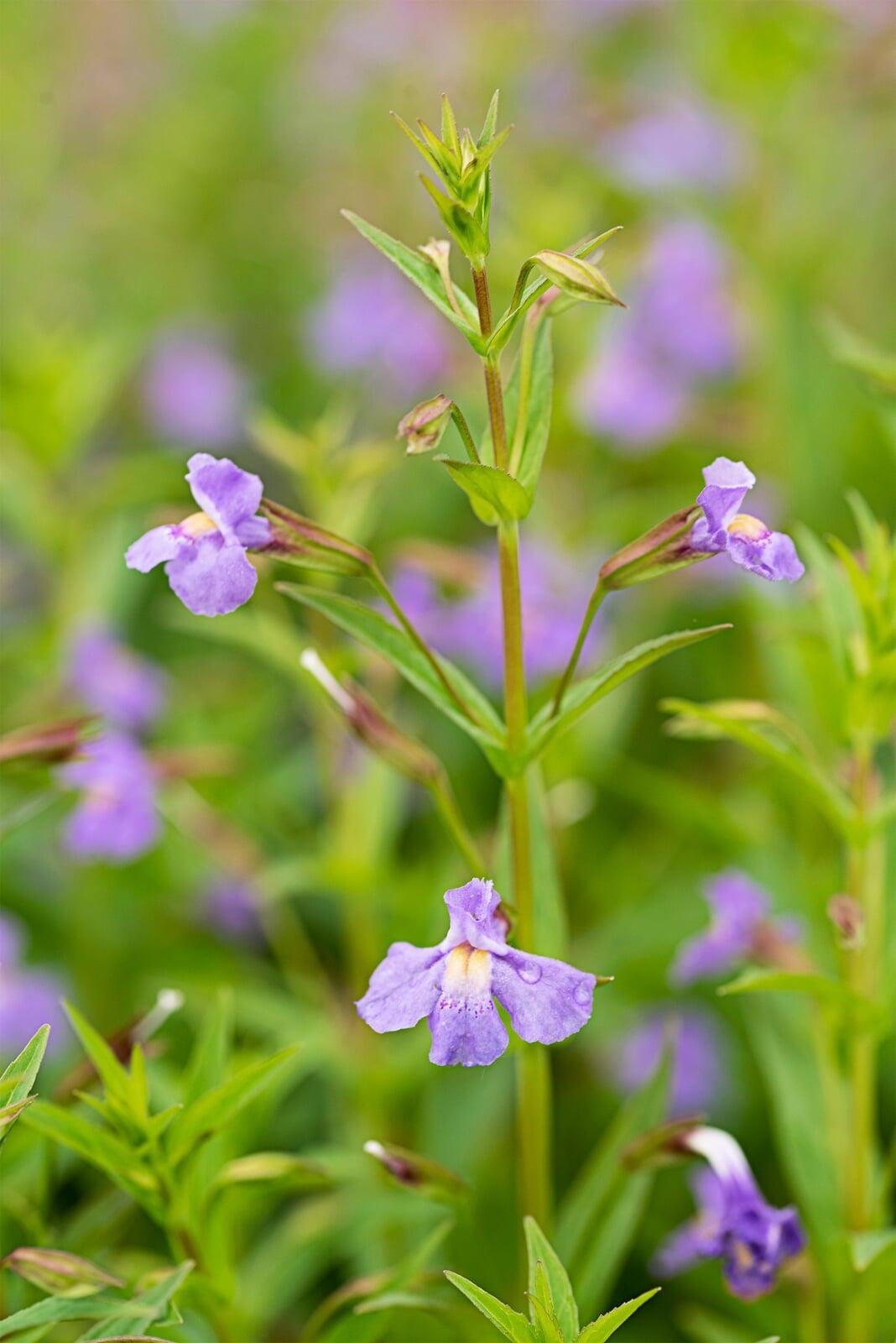Mimulus ringens
Monkey flower Description:
Mimulus ringens, commonly known as Allegheny monkey flower or simply as Monkey flower, is a herbaceous perennial plant that is native to eastern North America. It is a member of the snapdragon family and is found growing in wetland areas, including swamps, bogs, and marshes.
The plant grows up to 3 feet (90 cm) in height and has an upright habit. It has lance-shaped leaves that are up to 3 inches (7.6 cm) long and are arranged oppositely along the stem. The leaves are dark green in color and have a slightly hairy texture.
In mid to late summer, Allegheny monkey flower produces distinctive blue flowers that are two-lipped and tubular in shape. The flowers are arranged in terminal clusters and are highly attractive to a variety of pollinators, including bees, butterflies, and hummingbirds.
Allegheny monkey flower is a good choice for water gardens, rain gardens, and other wetland areas. It prefers moist, well-drained soil and full sun to partial shade. The plant has a number of medicinal uses and has been traditionally used as a herbal remedy for a variety of ailments, including as a treatment for respiratory and gastrointestinal issues.
Native Range:
Monkey flower is commonly found in the Midwest and Eastern United States. In Minnesota, Monkey flower is found in nearly all regions of the state.
Standard Plant Information:
Plant Height: 1' - 3'
Bloom Time: June - September
Preferred Habitat: Does well in part shade to full sun. Often found in wet swamps and shorelines.
Sowing:
For most homeowners, the best option is to scatter seed on the ground by hand broadcasting at a minimum of 16-64 pls ounces per acre. For even coverage, we recommend that you broadcast seed in perpendicular rows across the site to ensure even coverage.
You’ll want to broadcast any grass seed first, which will get raked into the soil lightly. Next, it is ideal to mulch the area lightly with either a clean (no seed) straw or preferably with our native Little Bluestem straw, sold at our retail garden centers. After a light mulching is complete, now it’s time to broadcast your native wildflower seeds, which should not be raked into the soil. A good rain or watering is sufficient to cover the seed.
Planting:
Simply dig a hole in the soil slightly larger than the plant’s roots. Ensure that the soil line of the plant is maintained during the transfer (i.e. the plant should be at the same level with the ground as it was in the pot). Pack any loose dirt back around the plant and make sure you water it well the same day to ensure it has the best chance of survival.
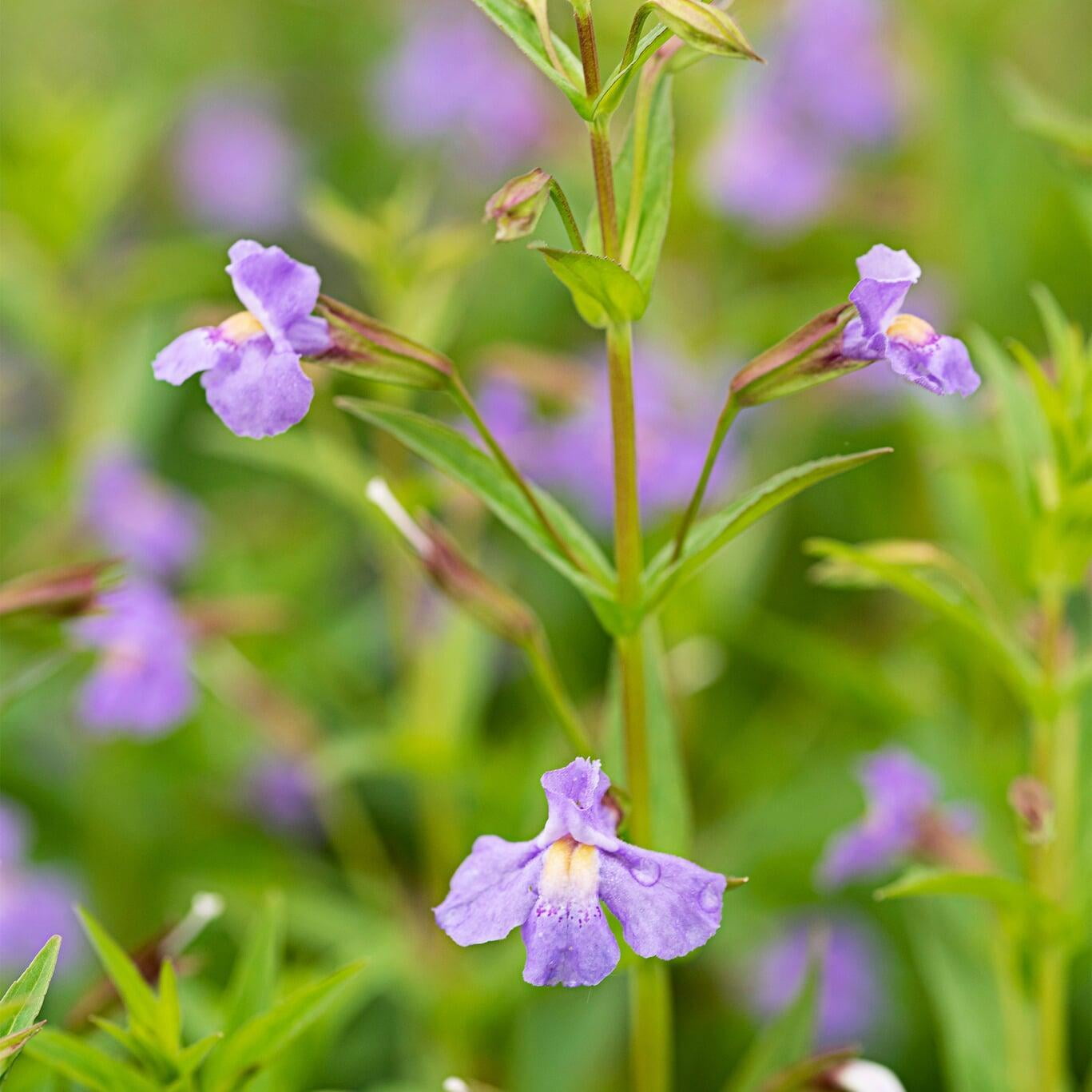
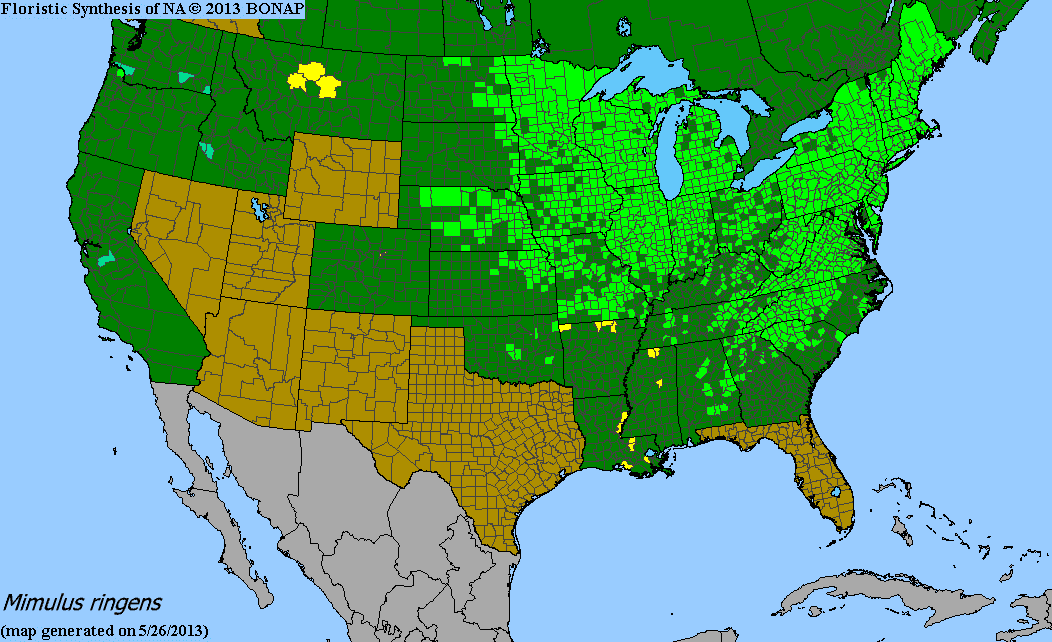
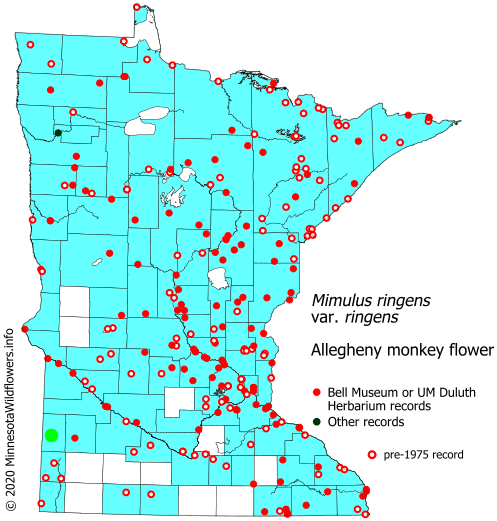
maps used with permission from MN Wildflowers
Mimulus ringens Gallery
Mimulus ringens Gallery
